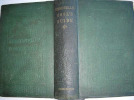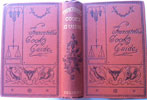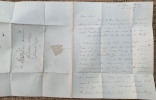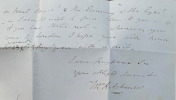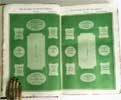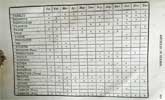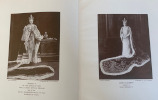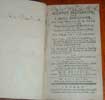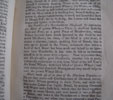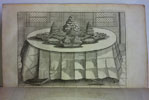THE COOK'S COMPLETE GUIDE,
ON THE PRINCIPLES OF Frugality, Comfort, and Elegance INCLUDING THE ART OF CARVING, AND THE MOST APPROVED METHOD OF SETTING OUT A TABLE EXPLAINED BY NUMEROUS COPPER-PLATE ENGRAVINGS, INSTRUCTIONS FOR PRESERVING HEALTH, AND ATTAINING OLD AGE; WITH DIRECTIONS FOR BREEDING AND FATTENING ALL SORTS OF POULTRY, AND FOR THE MANAGEMENT OF BEES, RABBITS, PIGS &c. &c. RULES FOR CULTIVATING A GARDEN, AND NUMEROUS USEFUL MISCELLANEOUS RECEIPTS. a line. BY A LADY, AUTHORESS OF "COTTAGE COMFORTS" a line. London: GEORGE VIRTUE, 26, IVY LANE, PATERNOSTER ROW.
FIRST EDITION. n/d Circa 1827. Thick 8vo. 222 x 148 x 50mm. 2 feps. 1p with ink Inscription from an aunt dated 1843. Frontispiece of a lady displaying meat, fish and vegetables. An first elaborate Title Page (The New London Cookery by a Lady). [1] Title Page. [1] 2p Contents. (1)-iv Preface. (3)4 - 812. 813 Addenda. (1)815 - 838 Index. 1fep. 5 Engraved plates in Text. Title page slightly age browned. Both title pages with small smudge not affecting text. Text Block very clean. Nicely bound with 1/4 light tan calf. Spine with raised bands and gilt lines. Dark brown label with gilt lettering. Boards with marbled paper and tan calf corners. Overall well preserved.
- This is a very comprehensive thick book with a huge 38 page Index. It is one of the many thick books of the time, all produced with similar layouts and abundant details. When they are all seen together, one is struck by how Beeton's Household Management of 1861, although some-what similar to the others, broke the mould with colour plates and better designed formatting. Hence its huge popularity. This book's title page proclaims the un-named Authoress (Esther Copley) to be the same as for the relatively small 'Cottage Comforts' (see item 10930 above). She also wrote one other small book titled 'Cottage Cookery' (see item 11016 below). Published and printed by Gorge Virtue this was a contracted work "by a Lady" that was subtly attributed to Copley to increase sales. We can be sure of this because the two "Cottage" books previously mentioned are clearly declared on the title pages as written by her. I'm sure she would wish the attribution of this book to her was also stated just as clearly.

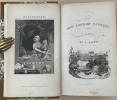



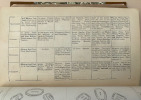
click on image to enlarge

Antiquarian category
ref number:
11258 
